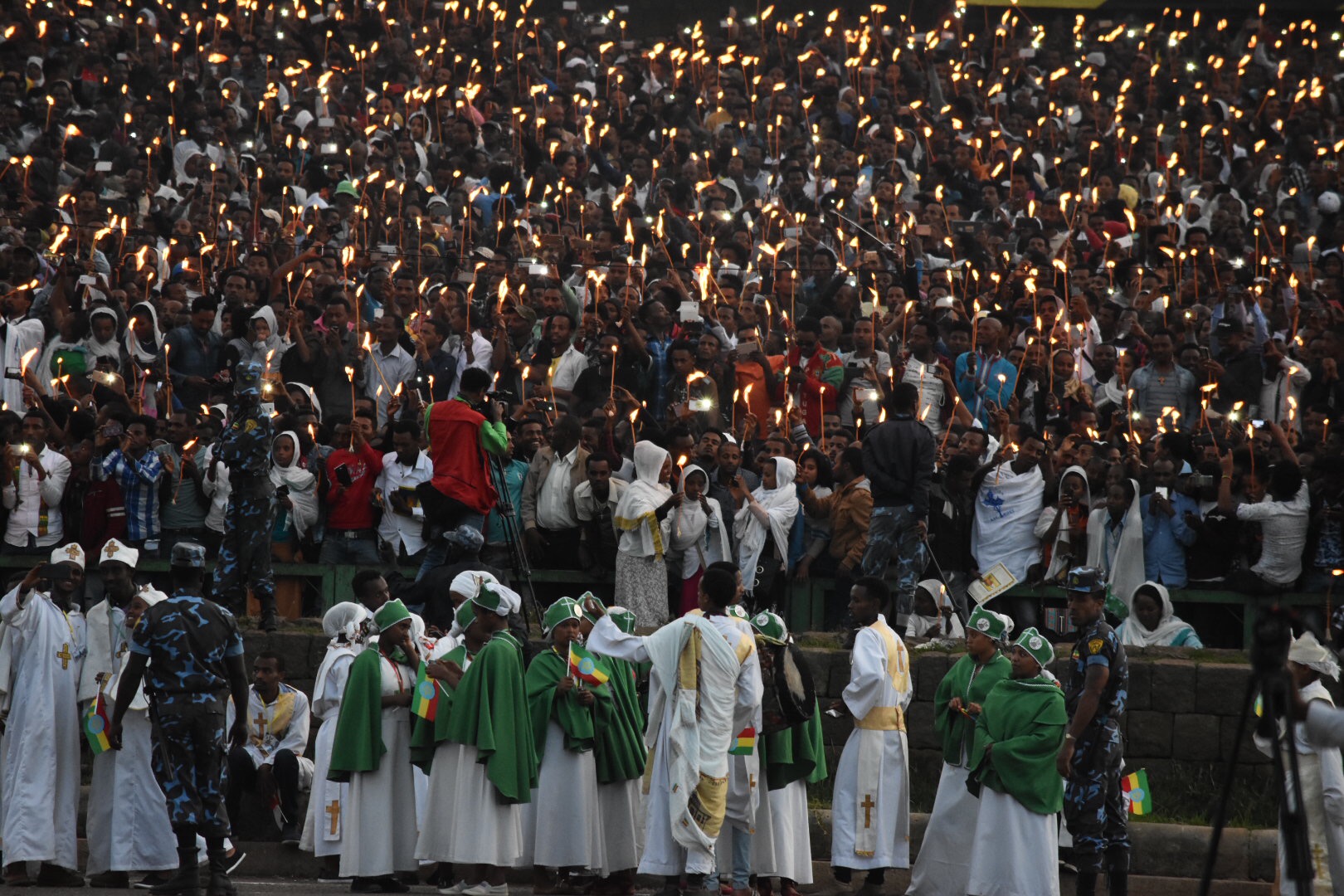Destination Review: Ethiopia, Africa
July 26, 2018 | By Theresa Tyo
Ethiopia is an ancient wonderland with rich cultural traditions, architectural remains, natural beauty, and enormously hospitable people.
 As my interests are in ancient history, archaeology and anthropology, Ethiopia is a treasure trove for me. Ethiopia celebrates the annual Meskel Festival every year on September 26-27. Meskel commemorates the time when Empress Helena of the 4th century, Mother of Constantine the Great, discovered the True Cross on which Christ was crucified. Meskel celebrates the presence of the True Cross at a mountain monastery, plus commemorates the events carried out by Empress Helena. According to tradition, Helena lit incense and prayed for assistance to guide her. The smoke drifted towards the direction of the buried cross. She dug and found 3 crosses, one of them being the cross used to crucify Jesus Christ.
As my interests are in ancient history, archaeology and anthropology, Ethiopia is a treasure trove for me. Ethiopia celebrates the annual Meskel Festival every year on September 26-27. Meskel commemorates the time when Empress Helena of the 4th century, Mother of Constantine the Great, discovered the True Cross on which Christ was crucified. Meskel celebrates the presence of the True Cross at a mountain monastery, plus commemorates the events carried out by Empress Helena. According to tradition, Helena lit incense and prayed for assistance to guide her. The smoke drifted towards the direction of the buried cross. She dug and found 3 crosses, one of them being the cross used to crucify Jesus Christ.
The feel at the festival was electrifying, and one could not help but get caught up in the emotion and the centuries of tradition all around. It is something special when we as foreigners are lucky enough to see and take part in such a cultural experience as Meskel. I will not soon forget.
After the festivities, we were able to take a cruise on Lake Tana, which at 2282 square miles is the largest lake in Ethiopia. We stopped at several of the monasteries on some of the many islands, and learned about the ancient manuscripts, crosses, icons and paintings that are preserved there.
Then it was on to Gondar, a town founded in 1636 by the great Emperor Fassilades, and is set in a landscape of incomparable beauty. The city holds the remains of several royal castles for which Gondar has been called the “Camelot of Africa.” Here we also visited the fascinating Debra Birham Selassie Church, with its walls and ceilings decorated with scenes of Biblical lore and medieval history.
Departing for the Simien Mountains, the views just kept getting better and better.  With a drive of about 2.5 to 3 hours, the Simien Mountains National Park is one of the most spectacular landscapes in the world. Massive erosion over millions of years has created jagged mountain peaks, deep valleys, and breathtaking views. The park was listed as a UNESCO site in 1978 for its outstanding beauty.
With a drive of about 2.5 to 3 hours, the Simien Mountains National Park is one of the most spectacular landscapes in the world. Massive erosion over millions of years has created jagged mountain peaks, deep valleys, and breathtaking views. The park was listed as a UNESCO site in 1978 for its outstanding beauty.
The day was spent exploring the stunning landscapes and wildlife of the Simien Mountains by foot. Gelada baboons, Walia ibex, Ethiopian wolf, not to mention over 180 species of bird are found within the national park, five of which will be seen nowhere else.
Lalibela is a town famous for its rock-hewn churches, churches carved from rock below ground level. They are connected to each other by a maze of tunnels and passages. There are also some rock-hewn churches in northern Tigray, which some say are older than the ones in Lalibela.
 Axum, with its fascinating ancient history, is another UNESCO site famed for its granite obelisks, relics of the 3rd and 4th century. The tallest of these is 108 feet and has fallen and broken into six massive pieces. Then there is the Roman Stele, famous for being shipped to Italy in 1937 by Mussolini and erected in Rome’s Piazza di Porta Capena. It was returned to Axum in 2007 just in time for the Ethiopian millennium celebration.
Axum, with its fascinating ancient history, is another UNESCO site famed for its granite obelisks, relics of the 3rd and 4th century. The tallest of these is 108 feet and has fallen and broken into six massive pieces. Then there is the Roman Stele, famous for being shipped to Italy in 1937 by Mussolini and erected in Rome’s Piazza di Porta Capena. It was returned to Axum in 2007 just in time for the Ethiopian millennium celebration.
The city tour of Axum also included a visit to St Mary’s of Zion Church and Sanctuary Chapel which is where the legendary Ark of the Covenant is believed to be.
I am so grateful to Ethiopian Airlines, Travel Ethiopia, The Kusini Collection, and all the beautiful people of this fabulous place. What a special experience I had to travel through this land with a talented group of colleagues! The memories made will last a lifetime.
